Best Smart Blinds for 2024, Tested and Reviewed
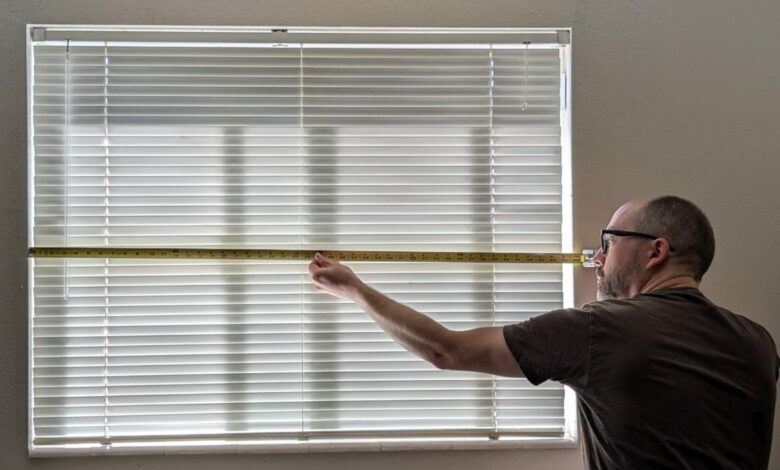
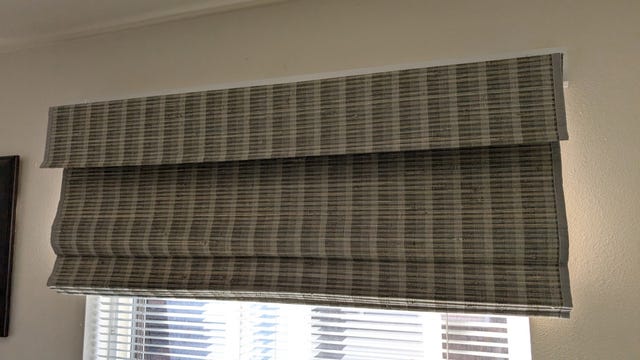
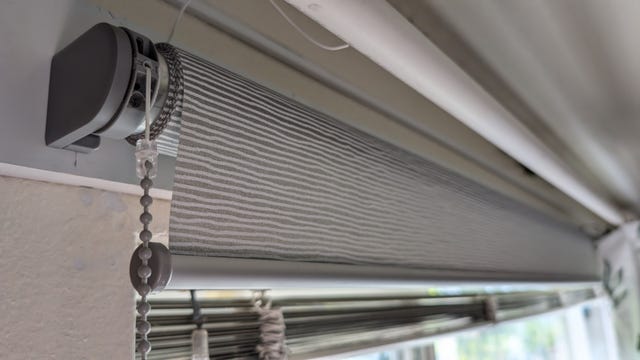
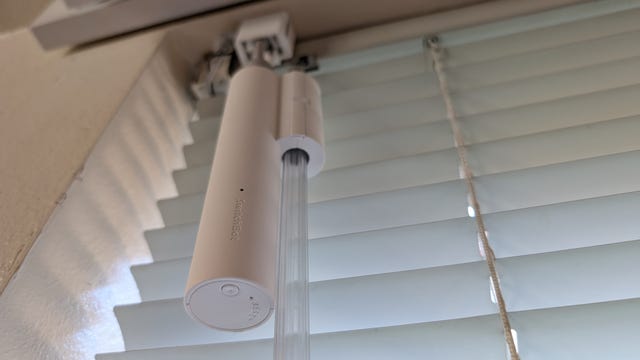

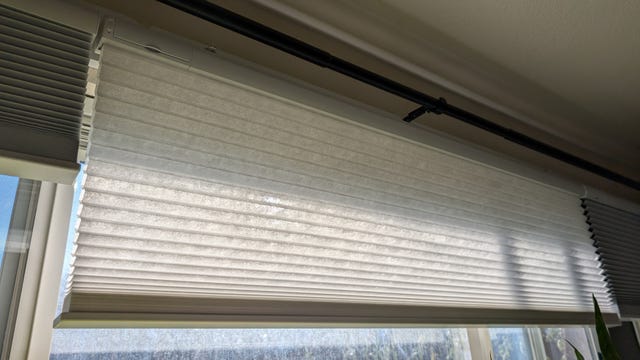
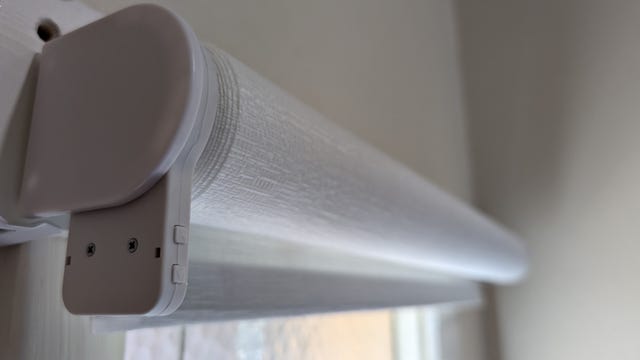
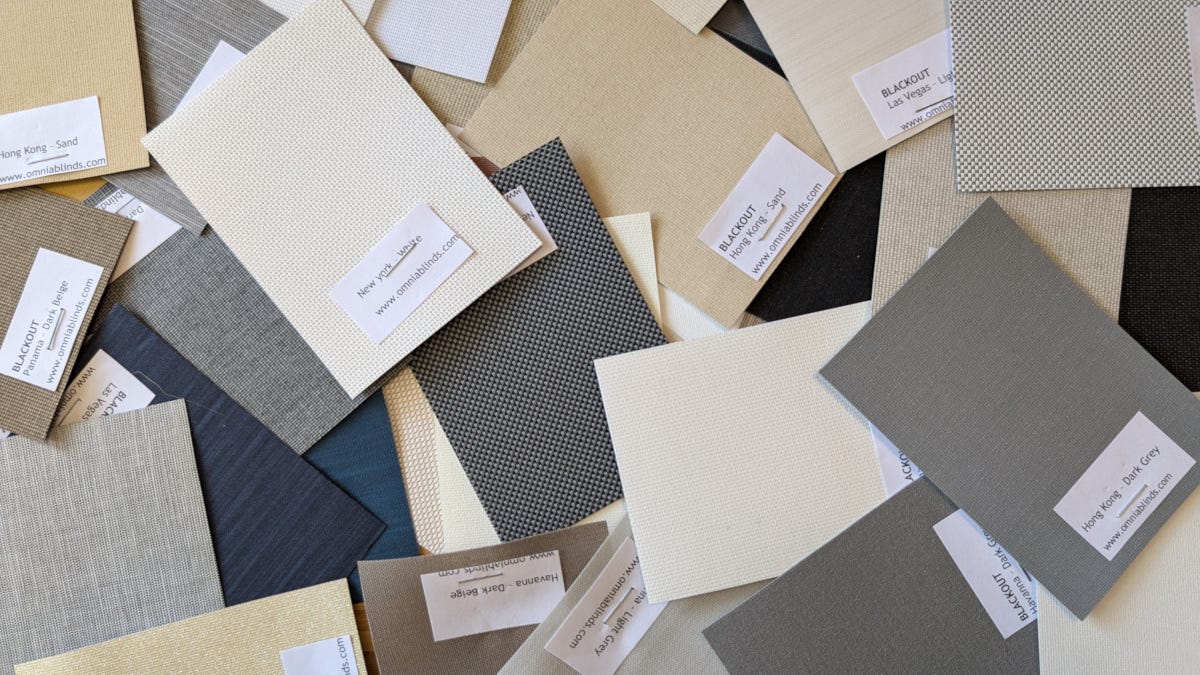
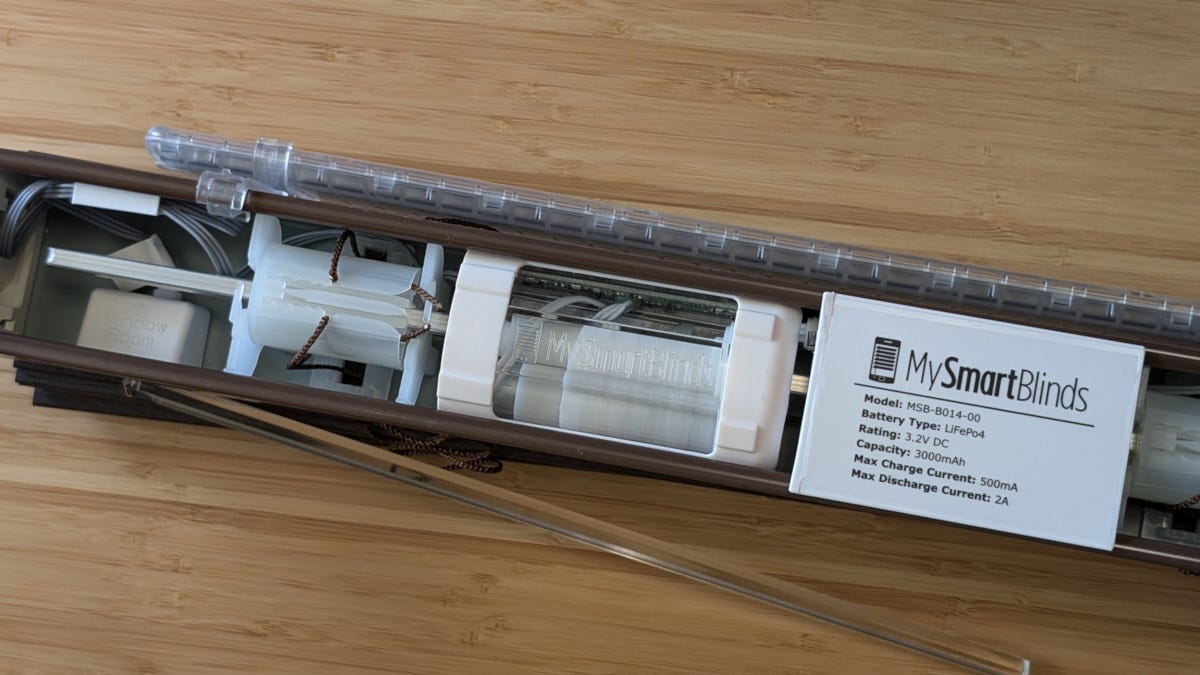
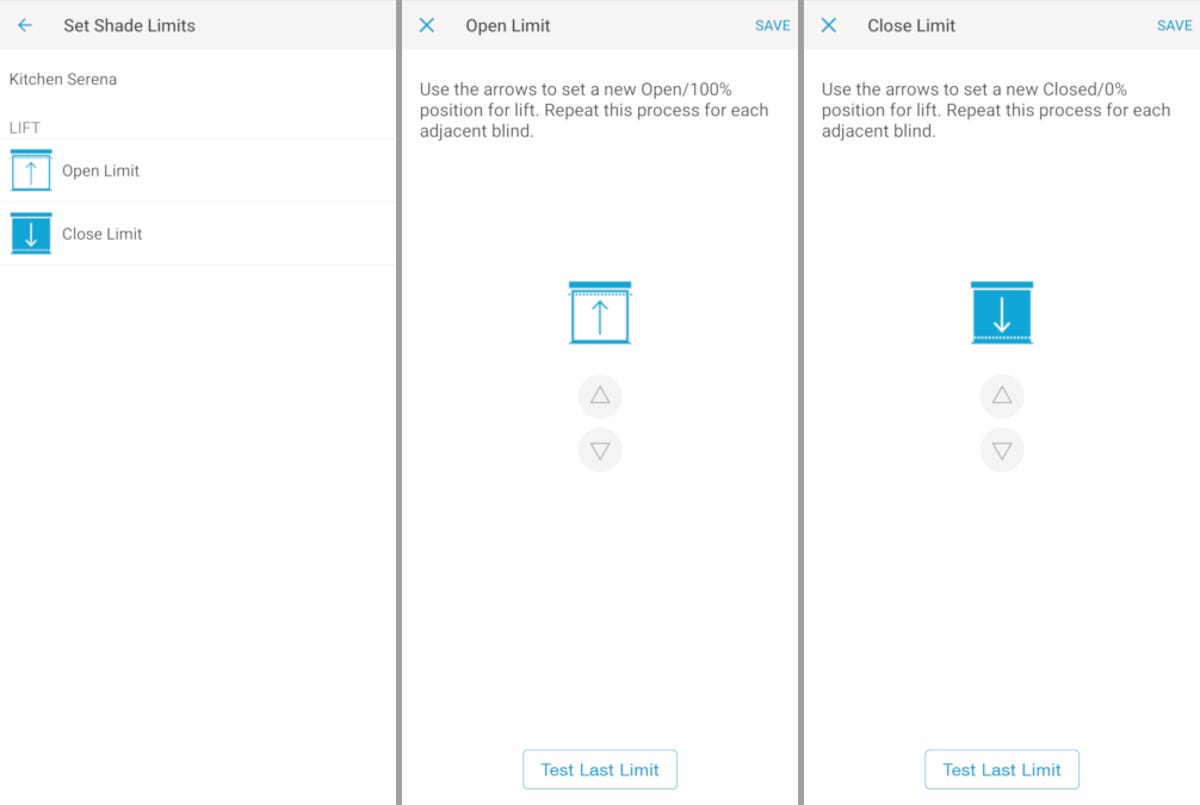
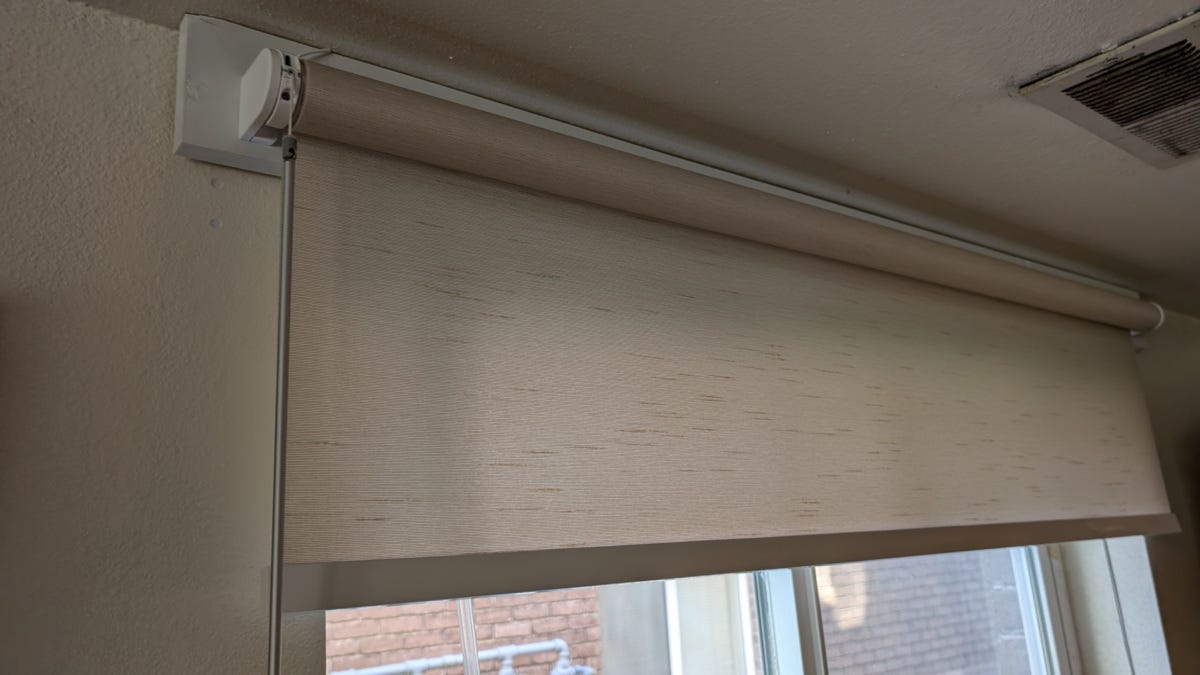
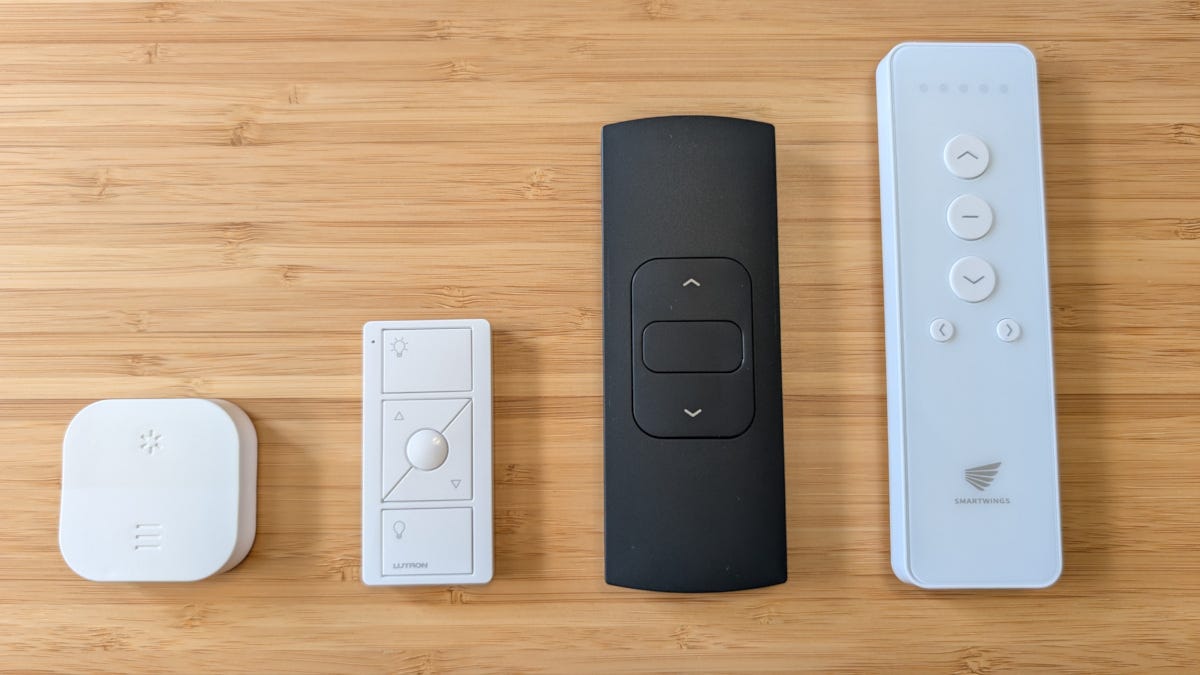
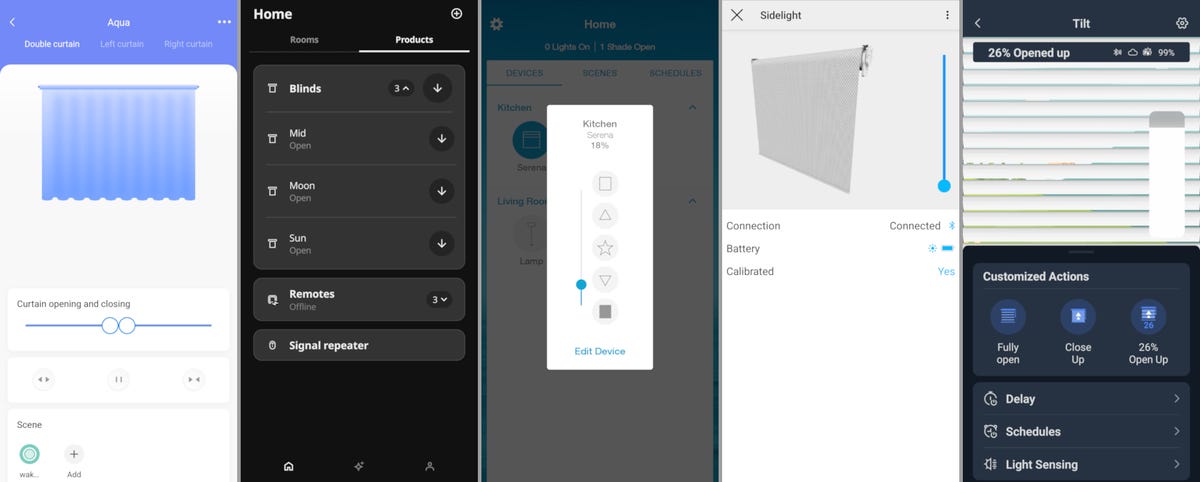
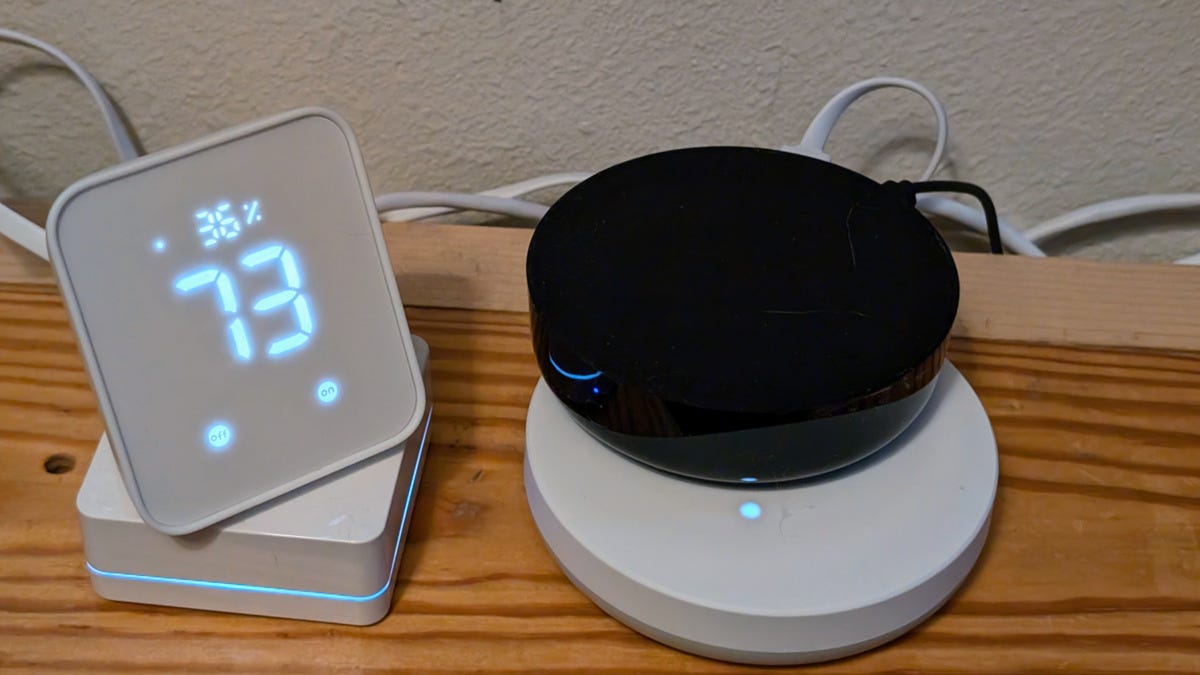
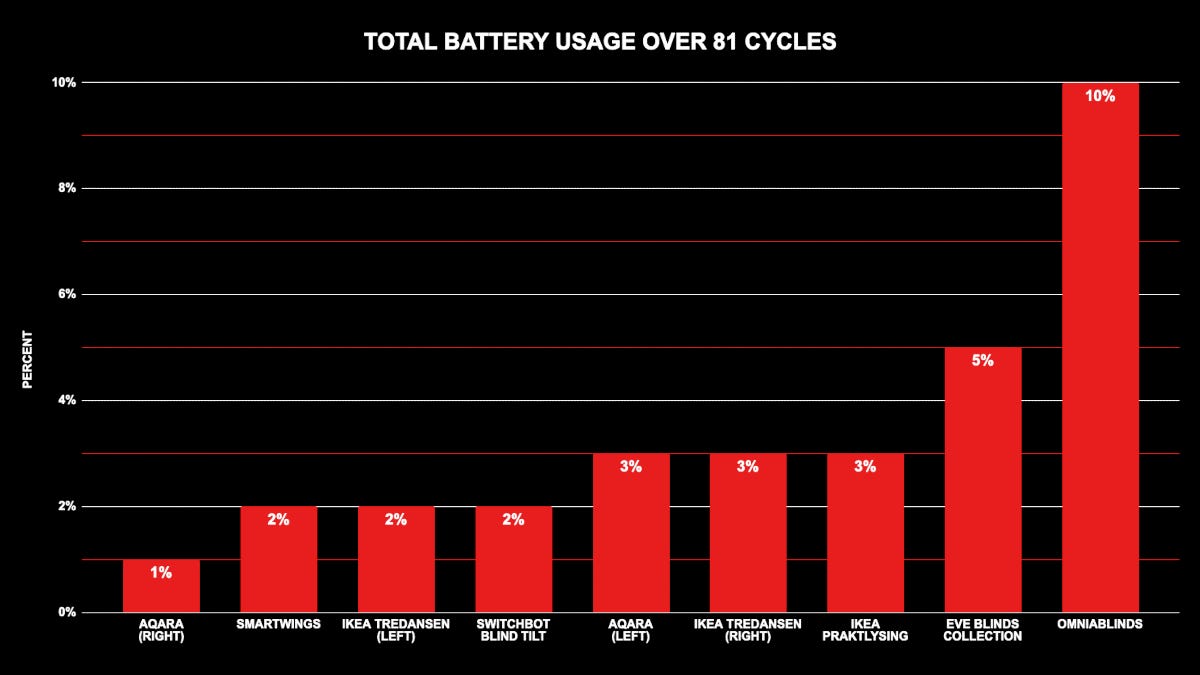
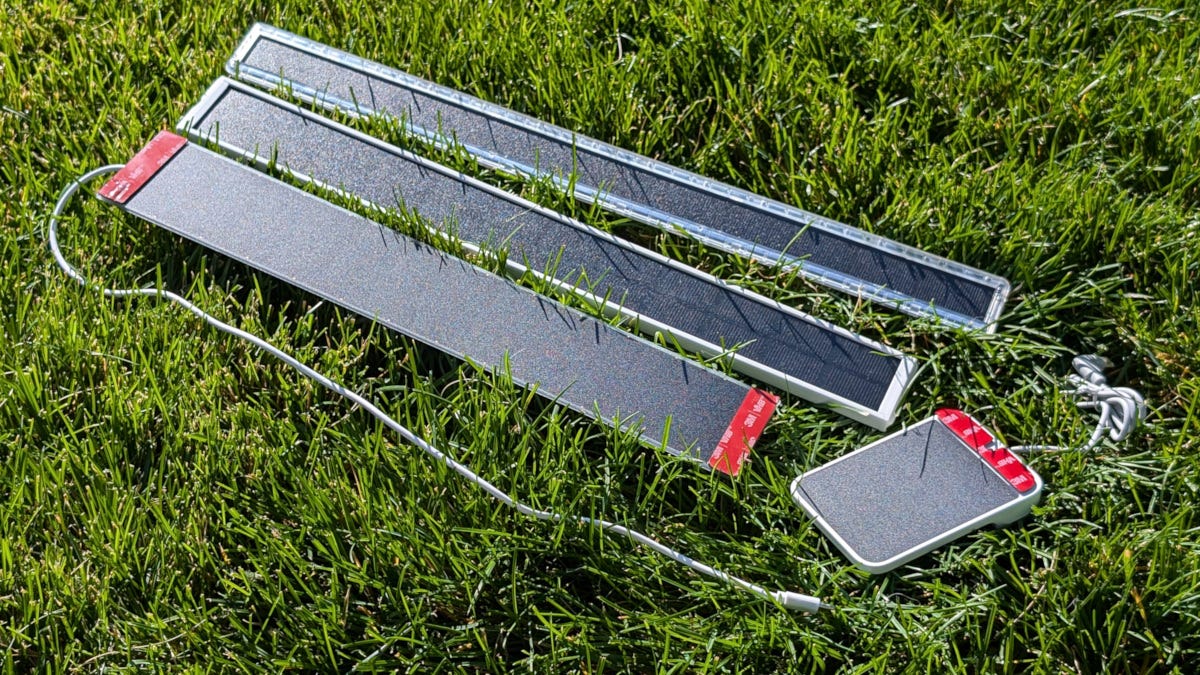
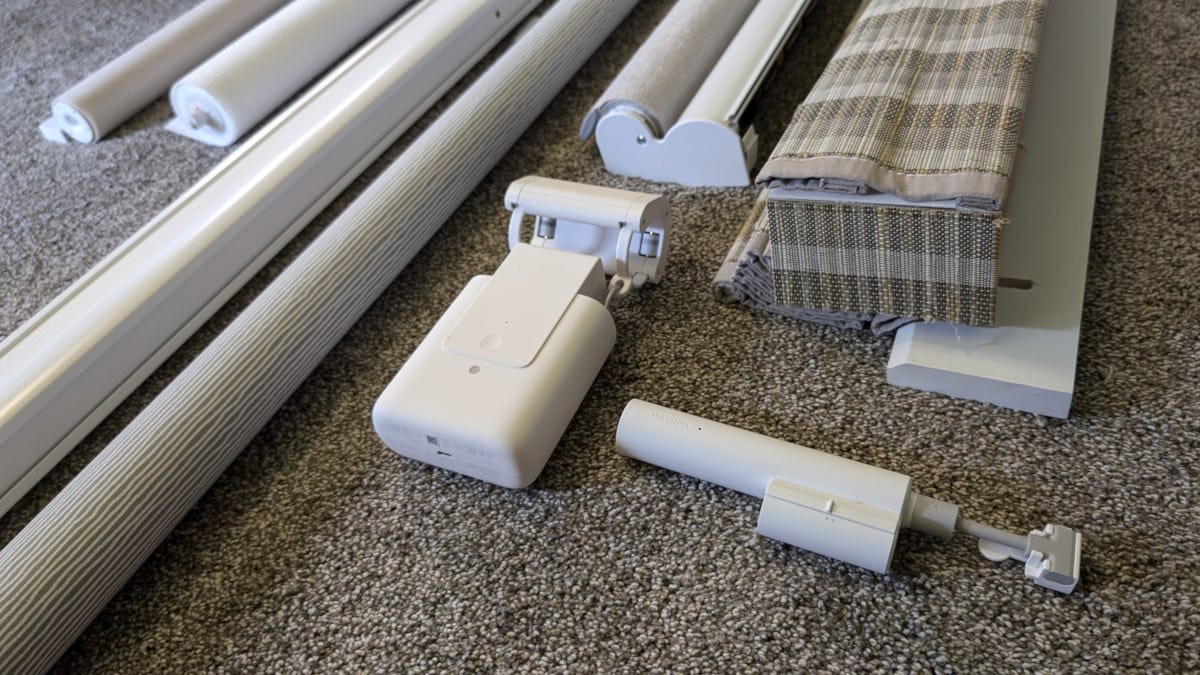
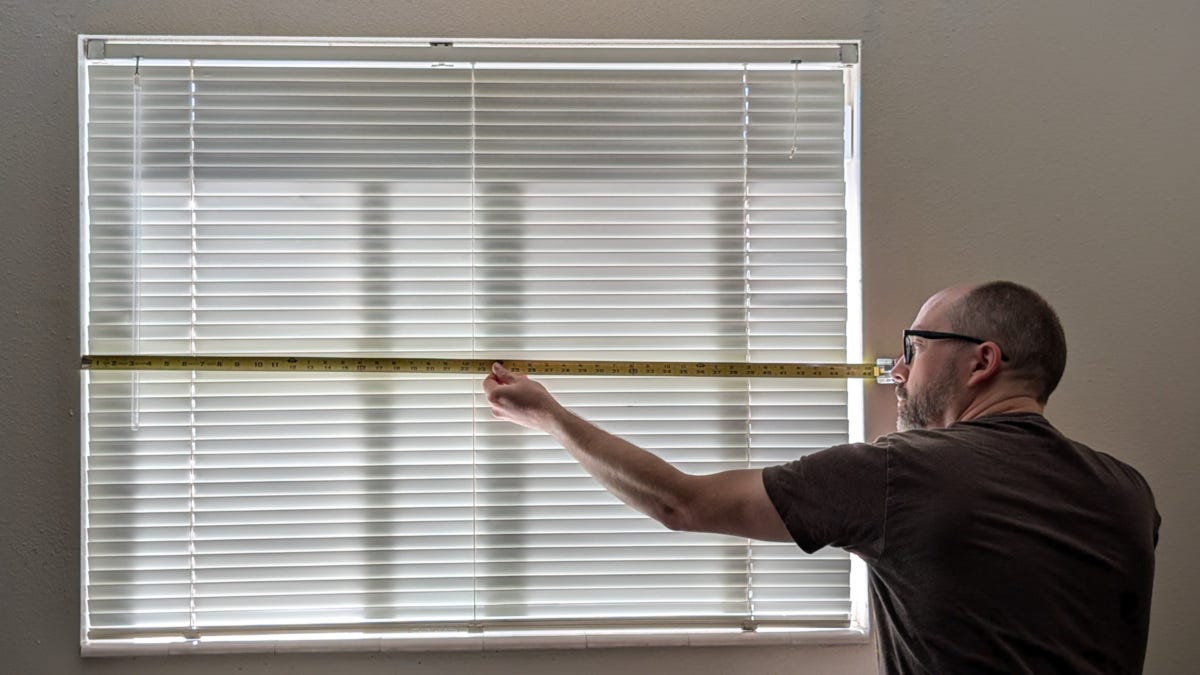
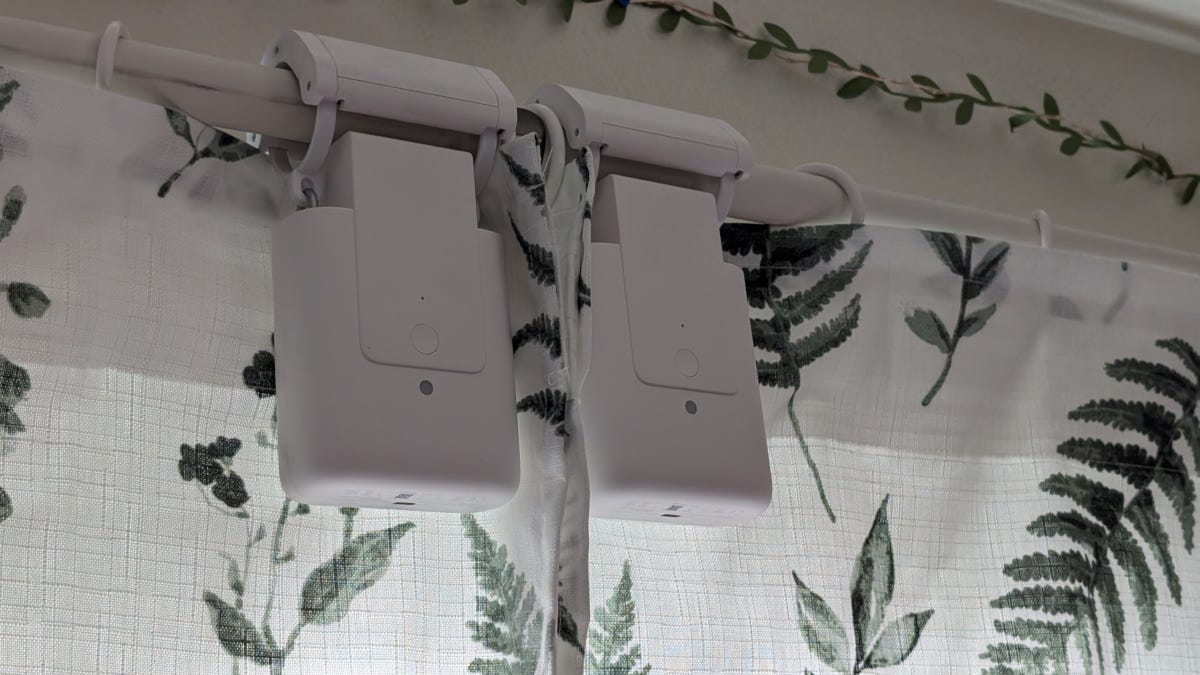

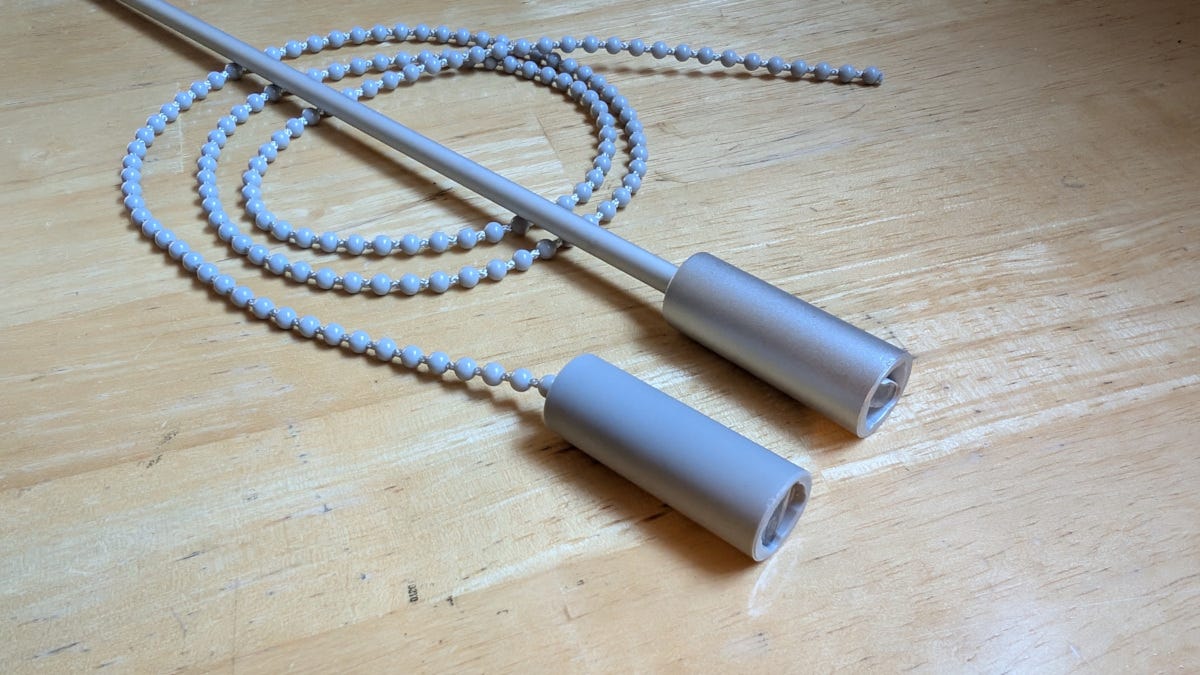
What’s the best smart blind overall?
Smart motorized blinds are among the most practical devices in a smart home’s portfolio because they harness natural lighting to make your home more comfortable and inviting. A button press brings in the perfect amount of light for chores or a lazy day in your favorite chair. Or you can schedule your smart blinds to close at sunset for maximum privacy and sleep-friendly darkness. And few smart home devices are as customizable as smart window treatments, which opens the door for affordable retrofit devices and pricey luxury shades.
I tested 10 smart window shades for price, installation, controls and power source, and SmartWings‘ extensive selection of custom shades helped it claim the title of 2024’s best smart blinds. If you want a solid retrofit for existing Venetian blinds, SwitchBot Blind Tilt’s price is unbeatable.
After repeatedly cycling smart shades, moving furniture for installation and scrolling through endless fabric options, these are the six best smart blinds and window shades for 2024 to automate and beautify your home.
Best smart blinds of 2024
Like
- 231 color options across 6 styles of window coverings
- Sells compatible motors for every major smart home system
- Reasonable prices for a custom window shading product
Don’t like
- No free fabric samples
- Some smart home integrations cost extra
- A few installation hiccups
SmartWings is a popular refrain in online communities when smart blinds come up. After research and testing, I’m confident that it lives up to its reputation.
Although ready-made options from Aqara, Ikea and SwitchBot are much cheaper, you’ll be hard-pressed to find more affordable custom smart blinds than SmartWings. Even OmniaBlinds’ similarly priced custom roller shades can’t compete with the other types of motorized window treatments SmartWings sells.
You can choose from six window covering types, including the only custom curtains, Roman shades, dual shades and outdoor shades in this review, with a combined 231 color options. Serena shades come close, but others can’t keep up.
SmartWings’ fleet of motors provides comprehensive smart home compatibility. Name a popular smart hub, and there’s a compatible SmartWings motor. The motors are also quiet — only Serena is quieter.
Despite its strengths, SmartWings falls short by inflating the price of some motors over others, namely Matter and Apple Home, which cost $50 to $65 more than Zigbee and $25 to $40 more than Z-Wave. It’s the only custom shade brand without free fabric samples, though its sample prices aren’t too high.
I ran into a few hiccups with installation, resulting in drilling additional holes for misplaced brackets. You can avoid this by attaching the brackets first to see where they go, but the written instructions could be better.
SmartWings manages to balance affordability, flexibility and compatibility to make outstanding smart shades that average people can afford.
Like
- Very affordable option for Eve MotionBlinds support
- Adjustable motor speed
- 159 color options
Don’t like
- Customs fees may apply
- Roller shades only
- Thread Border Router required for smart home integration
OmniaBlinds was a genuine surprise because it uses Eve MotionBlinds technology at half the price of Eve’s own custom automated shades. It’s neck-and-neck with SmartWings for the lowest smart roller shade prices, ultimately providing more value on large windows.
Setup is relatively painless, and I love the pull cord controls. Plus, you can choose from one of five motor speeds when the best other brands offer is two. Eve motors were louder than the average window shade I tested, but this didn’t detract from the overall experience.
I counted 159 color options on its website, which gives OmniaBlinds the third-best selection among automated blinds in this comparison. Although SmartWings and Serena Shades offer a more robust variety of window covering options overall, OmniaBlinds has the most color choices for roller shades.
OmniaBlinds orders ship from Sweden and arrive just as quickly as other brands I reviewed. Still, international purchases complicate the buying process due to customs fees for orders over $800. US Customs and Border Protection will notify you if you owe customs duties, which you’ll pay at your post office.
While I love that OmniaBlinds links to any Thread Border Router for full Matter support, it won’t work as well without a hub or remote. I use a Samsung SmartThings hub, but you can easily choose one from Amazon, Apple or Google.
Overall, OmniaBlinds’ affordability and a huge selection of colors make it worth your consideration.
Like
- Retrofit existing Venetian blinds
- SwitchBot app control over Bluetooth
- Includes solar charger
Don’t like
- Wand couplers may not fit some blinds
- Calibration can be tedious
- SwitchBot hub required for smart home integration
The SwitchBot Blind Tilt is ideal for renters like me since it retrofits any set of wand-controlled horizontal blinds—including 2-inch Venetian blinds and 1-inch mini blinds. Not bad for a $70 product that’s cheaper than everything else on this list. Like other motorized blind retrofits, it controls only the blind’s tilt.
You can control the Blind Tilt with the SwitchBot app, plus it enables light sensing and motor speed controls. Similarly, you can link it to other smart home platforms via a SwitchBot hub. It performed well with the platforms I used, though light sensing tended to override my other automations.
The installation process is a mishmash of adhesives and wand couplers, but the helpful templates show you where each component goes. Still, I tried multiple couplers before finding the right fit. Calibration wasn’t as intuitive, even as the app repeatedly warned me to turn the wand in one direction and made me start over if I backtracked. Finally, I took it slow, and calibration was a breeze. SwitchBot includes a solar panel with the Blind Tilt, which maintained a full charge in my tests.
I planned to test the SwitchBot Curtain 3, but it didn’t arrive in time. At first glance, it’s a better curtain controller than the Aqara models I tested since it works with telescoping curtain rods and more curtain types. However, it seems equivalent to Aqara for rail-based curtains.
SwitchBot recently announced the SwitchBot Roller Shade, which has an adjustable width to which you can add whichever fabric you want. Preorders start at $200, and it should ship in December 2024.
Like
- 222 color options across 3 styles of window coverings
- Standard and luxury fabric options
- Best remote controls
Don’t like
- Highest prices among sample quotes
- No rechargeable batteries
- Lutron hub required for Lutron app and smart home integration
Serena Shades by Lutron are the gold standard for custom window coverings — with a price to match. Although Serena sells only three types of electric blinds, it offers more color variety than SmartWings for roller blinds and cellular shades. Notably, Lutron sells wood blinds, a category SmartWings lacks.
While you can save some money with Serena’s cheaper fabric options, the real highlight is a selection of premium fabrics with rich colors and textures that few competitors can match.
I like how the Serena shade uses a single sturdy metal bracket that’s easier to install than any other brand. The straightforward installation process involves attaching only two self-driving screws to your wall’s studs.
The speed and quietness of the Serena motor are the best among the shades I tested. Likewise, the ultra-responsive remote control handles like a dream. I highly recommend the Lutron hub for linking your shades to a huge selection of smart home platforms.
As much as I enjoy Serena shades, the high prices lead to sticker shock, especially when adding Venetian blinds to large windows. Unlike other shades I tested, Serena doesn’t sell a rechargeable battery and recommends lithium AAs or alkaline D-cells. The model I tested used a whopping eight D-cells.
Fortunately, the front panel of the shade folds down for easy access to the battery compartment to keep weight down during installation. You can opt for a wired power source for close to the same price as batteries but may need an electrician if you don’t want visible wires.
Like
- Affordable off-the-shelf cellular blinds
- Blackout or light-filtering materials
- Includes remote control
Don’t like
- Limited sizing options and availability
- Available only in white
- Ikea hub required for Ikea app and smart home integration
Ikea is an outlier among smart blinds because it sells ready-made products in eight preset sizes — no customization or retrofitting required. Ikea’s budget blinds range from 23 to 48 inches wide, which is great for most small and medium windows. However, you’ll need multiple panels for large windows.
Thankfully, Ikea’s motorized blinds are extremely affordable, costing between $100 and $180. While Ikea might not be cheaper than SwitchBot Blind Tilt, it’s more attractive than slapping on a bulky retrofit motor.
Ikea’s budget blinds come in two variants based on how much light they block: Praktlysing filters some sunlight while Tredansen is a full blackout. Since these are cellular blinds, they also help insulate the room from hot sun and cold drafts.
Still, Ikea’s ready-made nature means you might not get an exact fit for your window, especially if you prefer smart shades that mount inside the window frame. Likewise, your color options are limited, and sizes may not always be in stock.
These shades include built-in Zigbee, which works best with Ikea’s Dirigera hub. Using Dirigera, you can link these shades to Alexa, Apple Home, Google Home and any smart home platform that supports Matter.
I like how Ikea includes a remote with every shade, but you’ll buy their CR2032 batteries separately. Ikea’s also the only brand with rechargeable batteries that are also removable, which you need to do for charging. For $22, you can keep a spare Braunit battery pack on hand for quick swaps.
Like
- Each smart window treatment comes with a solar panel
- App control over Bluetooth
- Excellent build quality
Don’t like
- 73-inch maximum width
- Multiple mobile apps
- SmarterHome bridge required for smart home integration
I liked the build quality on the SmarterHome products I tested: MySmartBlinds and MySmartRollerShades — easily matching Serena shades. Plus, its smart blinds come with the best solar panels in this comparison.
SmarterHome’s solar panels stand out because you can mount them using brackets or adhesives — competitors use only adhesives. Not only do brackets look more refined, they’re adjustable and easy to remove. Plus, this panel’s metal frame feels more robust than the frameless SmartWings panel.
While the mobile app experience and on-device controls are a step above Lutron, SmarterHome uses separate apps (and smart bridges) for each product line, making mixing and matching different shade styles hard.
Unfortunately, the maximum width of any single custom shade or blind is about 73 inches. You’ll need multiple shades to cover wider windows like my 8-footer, nullifying the competitive pricing SmarterHome achieves on smaller windows.
I love how the MySmartBlinds retrofit motor fits inside the headrail for any set of 2-inch Venetian blinds. (Still, it was a tight squeeze in the small Venetian blinds I used.) However, it costs almost $200 more than SwitchBot Blind Tilt, which has a better app and even works with miniblinds. Still, I prefer the MySmartBlinds solar panel and calibration over SwitchBot.
Other smart blinds we tested
- Aqara Curtain Driver E1: The pair of Aqara drivers I tested worked well after I had a compatible curtain rod, and $100 is a good value compared to custom motorized shades. Unfortunately, the tiny guide wheels won’t work without a perfectly smooth rod — you can’t use telescoping curtain rods. It’s not a problem for windows under 8 feet, the maximum continuous rod length I found at the hardware store, but wider windows require creativity or a pricey custom rod. SwitchBot Curtain 3 is a better option for rods.
- Eve Blinds Collection: The biggest strength of Eve’s exceptional MotionBlinds tech is that it powers custom window coverings from many retailers, including our budget pick, OmniaBlinds. It’s even available as a $200 retrofit kit for roller blinds. However, the Eve Blinds Collection has only 18 color options for roller shades that cost almost as much as Serena Shades.
How we tested smart blinds
Despite their relatively high cost compared to other smart home devices, smart window coverings are about as simple as a smart light switch. This posed an interesting question as I worked to create a satisfying testing methodology: How do I get useful test results for products with up, down and stop settings?
I settled on four factors affecting the end user the most: price, installation, controls and power source. I ruled out speed and loudness tests, which matter only when window blinds are moving — not when they run a handful of times daily.
Each brand in this comparison provided sample products for testing, and I quickly ran out of windows in which to install them.

I waded through hundreds of color options to get pricing data for the brands in this comparison.
Price: Getting quotes for three window sizes
I measured the windows in my home and used the following dimensions to generate quotes with each brand’s online order form.
| Width | Height | Area (sq. inches) | |
| Small (tall and narrow) | 22 5/8 in. | 79 in. | 1,787.4 sq in |
| Medium (close to square) | 45 3/4 in. | 35 1/2 in. | 1,624.1 sq in |
| Large (wide) | 93 7/8 in. | 47 in. | 4,412.1 sq in |
After getting my measurements, I decided that the small and medium windows should use outside mounting, which places brackets on or above the window frame. This required increasing the width and height based on each company’s recommendations. I chose an inside mount for the large window to cover my bases. (Please note that all of the test products use outside mounts to keep installation simple.)
To estimate prices for Aqara and SwitchBot curtain motors, I chose two units for the large window and one for the others. For Ikea’s pricing, I selected the closest size for each window, with the large window using three blinds total.
Average price estimates (all styles)
I collected 266 price quote samples across eight brands by finding the cheapest and most expensive options for each motorized blind variant a brand sells — in each test window. Although these averages are specific to my home, they helped me spot and summarize overall pricing trends for your convenience. Unless we have the same floor plan, you can expect different prices for your home.
undefined
| Aqara | Eve Blinds Collection | Ikea | OmniaBlinds | Serena Shades | SmarterHome | SmartWings | SwitchBot | |
| Small | $100 (retrofit) | $691 | $115 | $304 | $819 | $555 | $371 | $80 (retrofit) |
| Medium | $100 (retrofit) | $773 | $165 | $340 | $866 | $474 | $415 | $80 (retrofit) |
| Large | $200 (retrofit) | $1,161 | $395 (3 units) | $454 | $1,284 | $1,441 (3 units) | $565 | $124 (retrofit) |
| Basic remote | $18 | Third-party vendor | Included | $39 | $27 | None | $16 | $20 |
| Smart hub | $72* | Third-party* | $70* | Third-party* | $80 | $145 | $100* | $56 |
| Whole home (1 Small, 2 Medium, 2 Lage, 1 hub, 5 remotes) | $862 (retrofit) | $4,559 (no hub or remotes) | $1,305 | $2,087 (no hub) | $5,334 | $4,530 (no remotes) | $2,411 | $644 (retrofit) |
After calculating the average, OmniaBlinds and SmartWings were the only custom brands under $2,500 for all five windows. SmartWings was ultimately more expensive since its Matter over Thread motor option adds $95 to the base price of every motorized blind, while OmniaBlinds is compatible out of the box. SmartWings has the most affordable remotes overall.
Serena Shades by Lutron, Eve and SmarterHome all cost around twice as much as OmniaBlinds and SmartWings. Serena’s average price cracked $5,000 and produced the only quotes over $1,000 for my small and medium windows.
The savings kick in with a ready-made smart device from SwitchBot, Aqara or Ikea. Provided you already have compatible curtains or blinds, SwitchBot is the most affordable retrofit option, costing over $200 less than Aqara’s $862 average. Ikea’s budget blinds are in a class of their own, with very competitive prices for a complete system.
Installation

Installation sometimes involves retrofitting an existing shade with smart home tech like SmarterHome’s MySmartBlinds.
I got creative when hanging the smart blinds for my tests. As a renter, I didn’t want to put dozens of holes in my security deposit walls, so I drove two hooks into the studs by my windows (three on the large ones) to hang a mounting board. I sanded and painted each board before attaching the mounting hardware for my test products.
Using this method, I reduced 46 holes in my walls to 12 and minimized my time on the ladder. The hooks and boards also simplified removing the shades for adjustments, swapping products and taking photos.
My added measures aside, none of the shades was overly difficult to install:
- Serena Shades by Lutron had the easiest installation by far: a solid metal bracket that attaches to your studs with two self-drilling 2-inch screws. From there, you clip the shade in place with sliding latches.
- OmniaBlinds and Eve Blinds Collection used the same mounting hardware. The instructions were reasonably easy to follow, but I had to double-check with my wife when finding the correct spacing for the brackets: deduct 1.18 in. (30 mm) from the overall width. OmniaBlinds didn’t include screws, while Eve came with six.
- Ikea’s cellular blinds were easy to mount in my large office window, but the preset sizes meant using three units for full coverage. They didn’t have the smallest width (23 in.) at pickup, so I used 27-inch side panels. Ikea doesn’t include screws, so you’ll need at least four screws for each smart shade you hang.
- The SmartWings Roman shade was a little fussy since the mounting brackets use wingnuts to hold the shade in place. On my first attempt, the brackets were too close to the motor mount to turn the wingnuts. After fixing this, I realized the center mount wasn’t in the exact center of the shade, so I redid those screws — good thing I decided against drilling holes in my drywall. These three brackets feel solid and attach with four screws apiece.
- SmarterHome sent me MySmartRollerShades and MySmartBlinds, the roller shades attached with a pair of simple brackets using two screws apiece. While the company’s installation videos were helpful, I was disappointed at the lack of a printed instruction manual — or even a digital one. The blinds were also fairly easy to install with the brand’s SmartLock mounting system, which uses adhesive mounts and a tension spring to attach to window frames without screws. The default setup was too wide for my testing location, so I had to adjust the SmartLock to fit. Adding the retrofit motor was tedious because the blinds were so small — I had trouble connecting wiring and inserting the components in the tight headrail. It’s much easier on larger blinds.
- The SwitchBot Blind Tilt attached quickly to my existing Venetian mini blinds using adhesive pads and a plastic coupler that wraps around the wand. When checking compatibility, the SwitchBot measurement tool indicated the XL size. The coupler didn’t grip the wand when I first attached it, so I tried the large coupler instead. It also didn’t fit. My final attempt combined the XL adhesive with the plastic from the large coupler. It worked like a charm.
- Aqara’s Curtain Driver E1 (Rod Version) was quick to install on a curtain rod with simple clips, but it doesn’t work with telescoping curtain rods. I needed another solution. Unfortunately, the window was too wide for a single continuous rod from the hardware store — FYI, those top out at 8 feet. Instead, I bought some PVC pipe and slid it over a smaller curtain rod for added stiffness, which helped me get the Aqara curtain drivers in place.
Serena, SwitchBot and Aqara’s installation instructions were the easiest to follow, while OmniaBlinds, Eve and Ikea’s minimalist manuals relied too heavily on diagrams instead of text. Still, none of them tripped me up like SmartWings or made me wish for simple text instructions like SmarterHome.
Setting open and close limits

Limits, as shown in the Lutron app, tell the window shade where to stop when fully opening and closing.
Calibrating limits was straightforward for most brands I tested thanks to clear instructions (Serena, SmartWings, Eve, OmniaBlinds and Ikea) or mobile app controls (SmarterHome, Serena and Ikea).
The only issues I had were with Aqara and SwitchBot. In Aqara’s case, I had to flip the open/close pattern multiple times to show the right visuals in the Aqara app — at least its motor travel settings were fairly straightforward.
SwitchBot Blind Tilt has the most tedious calibration: you can only rotate the blind wand in one direction. I had to restart the process each time I overshot the Fully Open position and decided to backtrack — it’s way smoother if you take your time.
Controls
After installation, I jumped into the setup process and tried the controls. I noted the ease of using on-device controls, pairing remotes and linking smart home platforms.
On-device controls

Physical controls, like the wand on the Eve Blinds Collection, are helpful for using smart blinds without an app or smart hub.
Six of the nine shades I tested include on-device controls for adjusting shade levels without a remote: Ikea, Eve, Aqara, OmniaBlinds, MySmartBlinds and MySmartRollerShades.
Eve, MySmartBlinds and OmniaBlinds had the most intuitive controls — pull the wand or cord to open or close the shade. I love how this emulates the controls on a traditional window covering and saves you from reaching up to the motor. I also enjoyed how Aqara’s curtain controller activates after pulling the curtains open a few inches, it’s more convenient than the control button. MySmartRollerShades and Ikea each include handy up and down buttons.
You can bypass the SwitchBot Blind Tilt by manually turning the blind wand to adjust the angle of the slats. Unfortunately, Serena and SmartWings lack on-device controls — you need a remote or hub to use them.
Remotes

I tested remotes from Ikea, Serena, OmniaBlinds (Eve) and SmartWings.
I had no trouble pairing the remotes and like how they link directly to the motorized shade without a smart hub. SwitchBot supports a direct remote connection, but I didn’t have one.
Serena makes up for its lack of on-device controls with the best remote in the group. Its Lutron Caseta Pico controls the shade in small increments or fully opens it. I loved how snappy the remote felt and the quick response of the shade anytime I tapped a button.
Other remote highlights are Ikea’s compact size and magnetic mounting, SmartWings’ cheapest model controlling up to five shades independently and OmniaBlinds’ minimalist aesthetics.
While Aqara supports a remote, you need an Aqara hub. SmarterHome is the only brand that doesn’t sell a remote instead relying on mobile app controls. You can jerry-rig a remote with SmarterHome by linking the brand’s hub to SmartThings.
Mobile apps and smart home integrations

Where possible, I used each smart blind brand’s smart home hub to rate its app experience.
Where possible, I used each brand’s smart home hub to see its native app experience. The only apps I didn’t use were Eve (also used by OmniaBlinds) and SmartWings, so I controlled them with SmartThings instead. The app options from Serena Shades by Lutron and Ikea are barebones: manual controls, scenes, scheduling and settings. You can safely ignore these apps after setup if you have a remote control or smart home connection.
SmarterHome uses separate apps for its smart product lines: Tilt (MyRollerShades) and MySmartBlinds. The reason the company gave me is that it developed each app for the Bluetooth tech available at the time. I get that this simplifies each app’s development needs, but a single app would be easier to market to potential customers. Other than some quiet mode options, SmarterHome’s apps are similar to those from Lutron and Ikea.
The SwitchBot and Aqara apps offer light-sensing options in addition to the standard settings. I thought they were neat but not overly practical for my home.

Various smart hubs and bridges for the blinds I tested.
I also linked everything to my Samsung SmartThings hub to simplify using them with Alexa and Google. I leaned heavily into Matter — Ikea, Aqara, SwitchBot, Eve, OmniaBlinds and SmartWings all support it. Serena and SmarterHome don’t explicitly offer Matter support, but SmartThings made up the difference. I lack the hardware for testing Apple Home integration, but experience tells me not to expect any major differences.
Among the platforms I used, SmartThings and Alexa were slightly better for smart home automation than Google Home. While all three had reliable app controls, Google Home refused to add smart blinds to any routine or schedule when I chose “Adjust home devices” from the menu. Instead, I had to select “Try adding your own” to create a custom action, which involves typing out a voice command. While it’s a minor gripe, anyone unfamiliar with Google Home’s custom actions would be frustrated.
Power source

Among the brands I tracked in my 81-cycle test, Aqara, Ikea, SwitchBot and SmartWings showed the lowest battery drain, dropping 2% or less, while OmniaBlinds used the most battery at 10%.
I noted excessive battery use throughout my day-to-day testing. I used each smart home device like a typical customer, only controlling it as needed. Some shades stayed closed for privacy reasons while others used schedules.
There was a noticeable drop in battery life for the remote control blinds running on schedules: OmniaBlinds, SmartWings and Eve, but the other shades used little energy. Based on this usage, I estimate most brands will last 6 to 12 months between charging sessions.
I also used SmartThings routines to simulate 27 days of above-average usage — three cycles per day — in 2 hours. While this 81-cycle test gave me delicious data, SmartThings’ battery life reporting wasn’t consistent across brands — my findings are informative but not definitive.
I couldn’t track two brands, Serena and SmarterHome, since they don’t present battery life using percentages in their apps. The Lutron app doesn’t show battery status but the brand estimates 1 to 6 years of operation.

Solar panel accessories from SmarterHome, SmartWings and SwitchBot kept their smart blinds charged after I set them up.
Smart blinds specs
undefined
| Aqara | Eve Blinds Collection | Ikea | OmniaBlinds | Serena Shades | SmarterHome | SmartWings | SwitchBot | |
| Available shade styles | Curtains | Roller | Cellular | Roller | Venetian, roller, cellular | Venetian, roller | Roman, roller, cellular, curtains, outdoor, dual | Venetian, curtains |
| Colors (all styles combined) | White | $18 | $2 | $159 | $222 | $63 | $231 | White |
| Material transparency | Uses existing curtains | Light-filtering, blackout | Light-filtering, blackout | Sheer, light-filtering, blackout | Sheer, light-filtering, blackout | Sheer, light-filtering, blackout | Sheer, light-filtering, blackout | Uses existing blinds or curtains |
| Width (inches) | Universal | 26-66 | 23-48 | 24.4-98.4 | 14-96 | 21-73.9 | 16-220 | Up to 118 |
| Height (inches) | Universal | 12-120 | 76.8 | Up to 112.2 | 12-120 | 10-120 | 22-155 | Universal |
| Weight limit (pounds) | 26.4 | – | – | – | – | – | – | 33.1 |

Smart blinds buying guide: Things to consider
Choosing smart blinds and window shades relies heavily on personal preference. Still, you can make the process smoother by getting accurate window measurements, exploring available styles, accounting for privacy needs and evaluating pull-cord safety.
Measure your windows accurately

Measuring the middle of the window, in addition to the sides, helps you find the best fit when ordering smart blinds.
The most helpful advice I came across in my research is to measure all four sides of a window, as well as the midpoints — vertically and horizontally. As a result, you’ll have six measurements for each window:
- Width: top, middle, bottom
- Height: left, middle, right
Taking three measurements on each axis accounts for slight differences in the framing around your window. It’s of particular importance when mounting smart blinds inside the window frame. Providing the smallest width measurement to the company helps it create the perfect fit with minimal gaps on the sides. There’s more flexibility with a window’s height since you can program the shade’s bottom limit after installation.
Expect to measure to the nearest eighth of an inch for most brands, though OmniaBlinds uses centimeters. If the measurement is too close to call, you can safely subtract 1/8-inch (0.3 cm) from the final number.
For outside mounting, add an extra 1 to 6 inches (2.5 to 10 cm) to the total width and height. This ensures the shade completely covers the window and its frame when closed. For roller shades, the amount of overlap depends on whether you choose front roll or back roll:
- Front roll hangs the shade away from the window, so 2 to 3 inches of overlap on either side can help maintain privacy and block light.
- Back roll places the shade closer to the window so it lays flat against the wall on either side — there’s no gap when you choose 1 to 2 inches of overlap.
Window treatment styles

You can add smart home controls to existing curtains using retrofit devices like the Aqara Curtain Driver E1.
There are many styles of motorized window coverings. The style you choose depends on your personal preferences and decorating goals, but this rundown should give you a better picture of your options.
Venetian blinds
Venetian blinds use horizontal slats that you can position at various angles based on the amount of light and airflow you want. Wood and vinyl are popular materials for the larger 2-inch slats, while aluminum and plastic are typical for 1-inch mini blinds. Slats aren’t the easiest to clean and can be vulnerable to damage from children and pets.
Serena and SmarterHome are the only brands I reviewed that sell custom Venetian blinds, though they stick to a small assortment of colors with 2-inch slats. You can also buy retrofit motors from SmarterHome and SwitchBot to convert traditional blinds into automatic blinds.
Regarding motorization, you can control only the angle of the slats on Venetian blinds — you must lift the window blinds manually.
Cellular blinds
Cellular blinds, also known as cellular shades or honeycomb blinds, are a modern update to the horizontal Venetian blind style. They use numerous hexagonal fabric cells that stretch out like an accordion when fully extended. Aside from the textured appearance, honeycomb blinds provide enhanced insulation. This is possible thanks to each cell’s hollow interior, which reduces heat transfer between the room and the window.
Serena, SmartWings and Ikea all sell honeycomb blinds, with Serena and SmartWings offering double-cell versions with extra insulating potential.
Roller blinds
From a mechanical standpoint, roller blinds are little more than fabric wrapped around a rotating cylinder. This simplicity provides a clean look that fits well into many rooms — it’s also why roller shades have the most color options of any smart window covering. Please note that some luxurious fabrics are very expensive.
Roughly half of the products I tested are roller shades: Serena, SmarterHome, Eve and OmniaBlinds. SmarterHome and Eve offer roller blind retrofit options.
Roman shades
Roman shades, sometimes called pleated shades, look similar to roller shades when fully extended. The main difference is that they fold into neat stacks of fabric when raised. I tested the SmartWings Woven Wood Shades and liked the unique appearance, though it’s more mechanically complex. Graber is another brand that sells Roman shades.
Curtains and drapes
In general, smart curtains are more affordable than other smart window coverings. This is due to the selection of retrofit motors from Aqara, SwitchBot and SmartWings. These motors aren’t compatible with all types of curtains, so you may need to upgrade your drapes when choosing this option. Still, curtains are hard to beat when covering gigantic windows. However, huge curtain panels aren’t always cheap and may exceed the weight limit of retrofit motors.
Vertical blinds
Vertical blinds look like a cross between curtains and blinds, which makes them ideal for big windows. They typically use a stiff fabric or plastic. I didn’t test any vertical blinds for this comparison due to the lack of a suitable location in my home. That said, options from Yoolax and Graywind may be worth exploring.
Other styles
I stumbled across a handful of unique window treatment styles from SmartWings. Zebra shades are roller shades with alternating sheer and translucent fabric sections. Dual shades layer multiple shades in the same window for blackout conditions at night and translucent shades during the day. SmartWings also offers the only outdoor roller shades among the brands I reviewed, though Graber also dabbles in this space.
Privacy and room brightness

The light-filtering shades on the left allow more natural light indoors than the blackout shades on the the right.
Depending on the material, window shades can improve a room’s privacy and ambiance while preventing sunlight from fading colors on furniture and other decor. They also help insulate against summer heat and winter drafts.
- Sheer fabrics provide UV protection and enable airflow through open windows while closed. They’re reasonably useful for daytime privacy but are useless at night.
- Light-filtering materials permit some light inside while providing privacy day and night.
- Blackout blinds block as much light as possible, which can be helpful for bedrooms and insulating against the heat of the sun.
The adjustable slats on Venetian blinds make it possible to prioritize airflow, privacy, light filtering or light blocking based on your current needs. Still, they typically don’t offer uniform light-scattering or as many color options as a fabric shade.
Pull-cord safety

The wand on Eve Blinds Collection is a safer alternative to traditional pull cords.
Be mindful of blinds with pull cords, which pose a strangulation hazard to young children and pets. Manufacturers are phasing these out to comply with safety regulations that took effect in June 2024. I love the Eve Blinds Collection’s approach, which swapped the cord for a sleek, rigid wand that’s easy to use. It’s a solid example of how motorized blinds and shades are ideal for cordless safety.
Two of the products in my tests included cords: SmarterHome and OmniaBlinds. When I asked each brand about its safety measures, I received a couple of explanations.
- OmniaBlinds said its beaded pull chain lacks a loop, is removable and you can shorten it with some scissors without affecting the device’s operation — they also told me they’re transitioning to a rigid wand for the U.S. market.
- MySmartBlinds told me their products meet the definitions of the new standard according to their internal testing data and include required warning labels.
Measuring for and installing smart shades, blinds and curtains is an easy-to-intermediate DIY project. However, this project involves more tools than a typical smart lock or thermostat. You’ll need a measuring tape, level, stud finder, cordless drill, screwdriver and a ladder or step stool.
It takes less than 5 minutes to take measurements, even when double-checking. Each shade I tested took an average of 10 to 30 minutes to find studs, find a level placement, drill pilot holes, attach mounting brackets and hang the unit. Linking remotes, setting open and close limits, and connecting the smart blinds to a smart home system takes upwards of another 15 minutes.
Although you can install smaller blinds by yourself, this project is faster and safer with a second person. They can hold the ladder and help you move larger blinds without damaging them.
There are merits and drawbacks to both approaches. Custom-built window coverings offer tons of variety and an exact fit that can help improve your home’s curb appeal. You can’t return them unless you’re exchanging a defective unit as part of a warranty claim. This no-refund policy arose because companies can’t resell custom shades to anyone else.
Ready-made options have more forgiving return policies and are generally cheaper. Still, they tend to have shorter warranties and fewer sizes.
A retrofit product is another off-the-shelf option for adding smart features to an existing blind or shade. You should carefully evaluate your window coverings to ensure they’ll work with a retrofit. Retrofits are also more visible than products with built-in motors.
Every smart blind, curtain motor and window shade in our comparison runs on battery power and doesn’t require a power cord. However, Serena Shades by Lutron and SmartWings also sell hardwired smart shades and blinds.
When the batteries need recharging, connect the shade to a USB power bank or a USB cable. Consider investing in a 10-foot USB cable or an extension cord if you don’t have a safe spot to leave a power bank. Never dangle a power bank by its charging cable—this can damage the unit, the cable and the window treatment. Likewise, unplug cables after charging to reduce tripping hazards and keep them away from moving devices.
Some brands sell or include solar charging accessories, chiefly SmartWings, SmarterHome and SwitchBot, which mount directly to the window using adhesive strips. Be mindful when placing solar panels on windows you open frequently so the window doesn’t hit them or overextend the power cord.
While there’s nothing wrong with using the same color and style of blinds in every room, it’s not strictly necessary beyond simplifying the ordering process or creating a unified look for your home. But even that mostly comes down to personal preference.
However, you can add a lot of visual variety to your home by installing window treatments that suit a room’s unique lighting and privacy needs — even in the same room, each wall can be different. For example, you might use blackout shades in a bedroom while sticking to Venetian blinds or zebra shades in the kitchen. Similarly, the occupants of different bedrooms may appreciate having shades that reflect their personalities.










